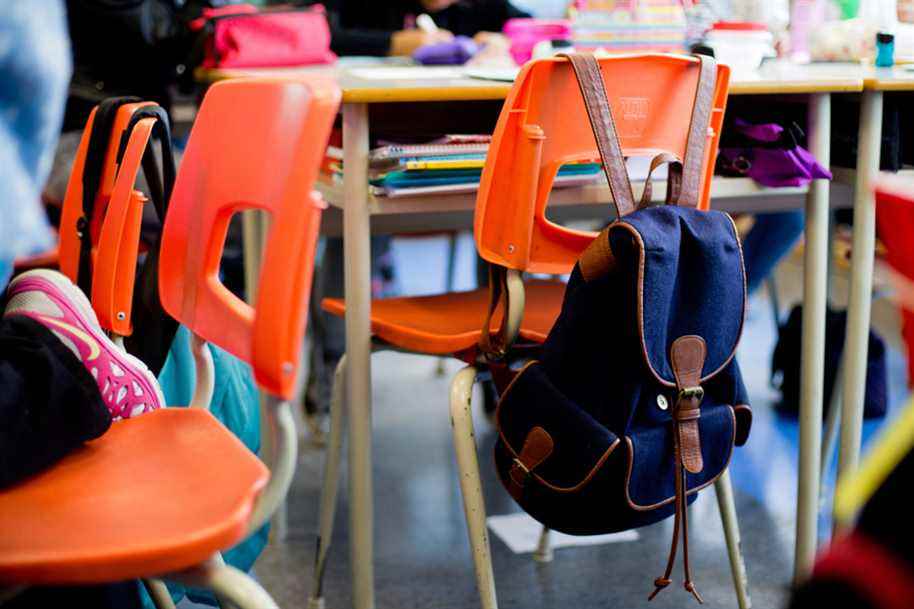Posted at 5:00 a.m.
Excluding absences for cases of COVID-19, the student absenteeism rate in Quebec schools is around 6%. This is a little higher than before the pandemic, note the school principals. Where are these 84,000 or so students who are absent every day?
For the past two months, the Ministry of Education has been publishing statistics on school absences, data that it did not collect before. The most recent report released on Friday indicates that the absenteeism rate in the province’s schools – public and private – is 6%. Absences related to COVID-19 cases are just under 2%.
Among school administrators, we note that absenteeism rates are a little higher than usual. President of the Quebec Federation of Educational Establishment Directors (FQDE), Nicolas Prévost immediately names what seems responsible for part of the increase, particularly among high school students.
“There are a lot of absences for anxiety among the girls,” observes Mr. Prévost.
At Charles-Lemoyne College in Longueuil, which he directs, David Bowles also sees it.
“We have young people who are very anxious: we notice it, they tell us about it. Young people who live with great anxiety and who have difficulty getting to school in the morning, there are more than before,” said Mr. Bowles, also president of the Federation of Private Education Establishments. (FEEP).
Impressions that are confirmed
The “impressions” of the school principals are confirmed by the figures of the DD Mélissa Généreux, professor at the Faculty of Medicine of the University of Sherbrooke and medical advisor to the Public Health Department of the CIUSSS de l’Estrie.
In high school, last January, 29% of young people surveyed in four regions of Quebec had moderate or severe symptoms of anxiety. “For girls in high school, it’s really huge, it’s 41%. Among boys, it’s 14%. The gap is quite large”, observes the DD Generous.
Two years earlier (before the pandemic), a smaller survey conducted in Estrie showed that 11% of young people in high school considered their mental health to be “fair or poor”. This year, this proportion is 28%.
With the restrictions linked to COVID-19, the school has somewhat lost what makes it a living environment, recalls the DD Généreux, who observes in his survey that young people now want to “feel physically well, socially attached to their environment”. Young people “want to return to their sport, to feel that they are supported by the school environment for their academic progress, to have relaxation areas at school”, illustrates the professor.
What about those who are too anxious to enjoy this return to some normalcy? “When we have anxiety, we try to avoid, and [la pandémie] offered them the avoidance on a silver platter. They have developed a comfort at home”, observes the DD Generous.
In secondary school, some observe that unjustified absences seem to be sanctioned less than before. “The principals are tired because of the management of COVID-19, it looks like they have let go of absences,” said a teacher.
In the context of a labor shortage, students in 4and and 5and secondary school work more, we also observe among school principals, without, however, linking this to the increase in absenteeism.
At the Beauce-Etchemin school service center (CSSBE), the absenteeism rate among elementary students was just over 3% in March, compared to 7% among high school students, or two points of percentage more than the same period in 2021. The CSSBE is “analyzing” the reasons for this increase, we are told. At the Rivière-du-Nord school service center in the Lower Laurentians, 4% of elementary students and 6% of secondary students were absent for the same period.
Travel, tournaments: recurring reasons for absence
The anxiety experienced by some students alone cannot explain the thousands of absences from school. David Bowles recalls that before the pandemic, many students would have presented themselves with cold symptoms. “Even if the tests are negative, the students stay at home much more than before,” said the director of Charles-Lemoyne college.
The return of organized sports – hockey tournaments, in particular – is also being felt. “Sometimes that causes students to miss Fridays. [À une certaine époque]the tournaments started on Thursday evening, but I think there was awareness,” said the president of the FQDE.
Sports activities having been canceled for a long period, we feel a certain “catching up” in schools, confirms David Bowles.
Some also make up for lost vacations. Now that the borders are reopened, we again see families in schools taking two weeks off rather than one.
Between March 2020 and June 2021, schools were closed for eight weeks. Can we think that missing a few days seems less serious for parents?
“On the contrary, I think people have seen the importance of school,” says Nicolas Prévost.

